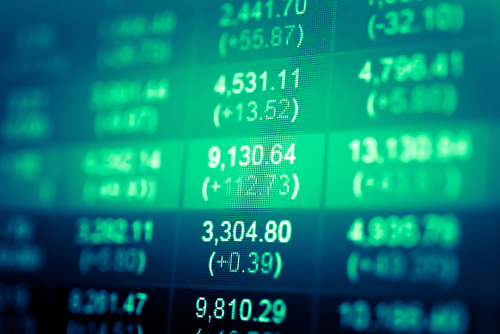
Risk

2024 US election: How to navigate volatility and manage risk
As the race to the White House enters the home straight, we’re still none the wiser on who’ll take up the hot seat in the Oval Office.
With Republican nominee Donald Trump and his Democratic rival Kamala Harris practically neck-and-neck in the polls, we’re set for one the most hotly and closely contested US elections in history.
The old saying goes that “markets hate uncertainty.” And while uncertainty reigns, there’s only one thing we can bank on: market volatility. Savvy traders know that volatility presents risks when trading but is also a tremendous gift – one that presents bigger price moves and therefore more opportunities to profit.
In this blog, we’ll break down why US elections create volatility, how you can turn it to your advantage, and how to manage the risks it produces.
What is volatility?
Volatility is a term you’ll hear used a lot in the trading world. But what does it refer to?
Well, volatility is the statistical tendency of an asset’s price to rise sharply or fall quickly during a given timeframe.
Volatile markets are characterised by extremely fast-paced price changes and high trading volume, increasing the likelihood that an asset will make major, unforeseen movements in either direction.
On the other hand, low-volatility markets tend to remain stable and exhibit few extreme price fluctuations. Volatility has thus become a by-word for how risky an asset is. More volatility equals more risk, and vice versa.
Our guide to trading in volatile markets covers everything you need to know in more detail.
Why does the US election create volatility?
The US election always has significant implications for global markets and traders. The outcome shapes everything from US economic policy and tax rates to international trade agreements and geopolitical stability.
With so much at stake, it’s no great surprise election periods typically bring heightened market volatility. And when no clear front runner emerges this only adds to the jitters, as markets can’t start to price in the outcome with any certainty.
If we look back at the 2020 election, Donald Trump and Joe Biden were almost inseparable in the polls. This saw the VIX index (which measures predicted volatility in the S&P 500 index 30-days forward) skyrocket 44% in the run up to the election! It then dropped 46% after Joe Biden claimed victory.
It's not just the S&P 500 that will experience big price moves, though. You can expect to see significant swings in USD pairs, US stocks, and other financial instruments as the election draws nearer.
How to navigate election volatility
History tells us that volatility ramps up in the run up to the election – and it appears this time will be no different. With that in mind, here are a few quick tips on how you can steer your way through the election storm, and even turn volatility to your advantage.
1. Set goals
If you’re trading election volatility, it’s important to think about what you want to achieve. A good way to do this is to set yourself ‘SMART’ goals – i.e. goals that are Specific, Measurable, Attainable, Relevant and Time-Bound.
For example, your goal could be to increase your portfolio’s value by 10% before the election result on 5th November. Or if you’re looking longer term, you could aim to make $3,000 profit by the end of 2024.
Each trader will have an individual goal in mind, so there’s no need to get competitive. Just pick something that’s right for your knowledge, experience and circumstance.
2. Have a plan
With clear goals in place, you can then plan how you’re going to achieve them. This will involve thinking about:
What markets you want to trade: Are you focusing on FX, indices, stocks, gold or oil? You’ll want to consider where you see the best opportunities, but also whether you have right market knowledge to trade them effectively. Don’t miss our guide to 3 markets to trade during the 2024 US election.
Your risk-reward ratio: How much are you willing to risk losing on a trade? Equally, how much profit do you need to justify the risk? If you’re unsure, a 1:3 ratio is usually a good starting point.
Your timeframe: Are you planning to capture short-term market movements or looking longer term?
Who you think will win: If you have a view on the eventual outcome, this will help you position your portfolio effectively. For example, a Trump win is likely to be positive for the US dollar, big tech stocks and gold, but negative for green energy and healthcare stocks. A Harris win is expected to provide a boost for defence and green energy stocks, but weigh on the US dollar, finance stocks and crypto.
3. Stay informed
Staying on top of the latest election developments is the best way to avoid being caught out by sudden market moves.
Our in-house analysts provide daily news, commentary and insight to keep you one step ahead of trading opportunities and potential risks.
You can find our latest US election news and analysis on the FXTM website and social channels, or even sign up to receive daily market updates straight to your inbox.
Managing your risk around the election
Volatility creates opportunities, but no opportunity comes without risk. And when trading during periods of heightened volatility, prudent risk management is more essential than ever.
Here are some surefire ways to help you limit your exposure and keep your risk in check.
1. Diversification
Ever heard the saying: “Don’t put all your eggs in one basket”? Well, this is especially true when it comes to trading.
Diversification refers to having multiple positions open across a range of different asset classes, thus limiting your exposure to the performance of a single asset or instrument.
For example, if you hold a single gold position, your whole portfolio is dependent on gold’s performance. However, if you build a portfolio of gold, oil, FX, stocks and indices, a sudden downturn in the price of gold will have far less impact on your bottom line.
To take your diversification strategy up a level, you should look to not only diversify across asset classes, but within each type of asset class too. For example, you could hold stocks from completely unrelated sectors.
2. Stop-loss orders
A stop-loss order is a handy tool traders and investors use to reduce their risk exposure. It’s basically an instruction to a broker to close a losing trade when an instrument reaches a certain price level.
For example, you might buy EUR/USD and set a stop loss 30 points away. This means if the FX pair drops by 30 points, your position will be automatically closed, ensuring your loss is capped at the level set.
You can use take-profit orders for the opposite purpose. Let’s say you buy EUR/USD and set a take-profit order 30 points away. If the FX pair rises by 30 points, your position will be automatically closed, locking in the profits you’ve made.
3. Hedging
One strategy you could use to limit your risk around the US election is hedging. It basically means opening positions that will turn a profit if other assets you own start to lose money. For example, you could:
Look to “safe-havens”
Safe-haven assets like gold and the Swiss franc tend to move inversely to the US dollar, enabling you to hedge against USD risk.
Short US stocks
If uncertainty starts to weigh on equity prices, you could short US indices or individual US stocks to hedge against a general downside move.
Invest in non-US assets
Focus on markets less sensitive to the election outcome. We offer a wide range of global indices and stocks, as well as minor and exotic currency pairs.
4. Control your emotions
Traders can adopt many different strategies to achieve their goals. But success is usually the result of a clear, systematic approach, rather than one based on ‘feelings’ or ‘hunches’.
It can be easy to get caught up in the emotion of volatile markets and look for quick wins, chase losses, or risk more than you would usually. But maintaining your discipline is key. Keep calm, remain consistent, and stick to the trading plan you put together.
The bottom line
History tells us that US elections and volatility always go hand in hand. And when no candidate emerges as a clear front runner, the uncertainty only adds to the market jitters.
For traders, election volatility can be a double-edged sword. It provides great trading opportunities and more chances to turn a profit, but it also creates a riskier environment that requires extra care and due diligence.
However, if you’re aware of what volatility is and know how to guard your portfolio against it, there’s no reason why you can’t take full advantage of all the opportunities it presents.


